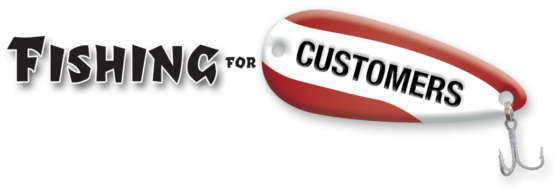Originally published March 8, 2008
They want you to make it stop hurting.
Remember Abraham Maslow’s Hierarchy of Human Needs? Maslow described “deficiencies” that cause an individual discomfort when her needs are not being met.
In other words, deprivation causes some degree of pain.
Making that pain stop is the motivation for nearly all purchasing decisions. People buy to lessen the physical or emotional pain; pain of loss, of disappointment, of longing.
The decision to purchase isn’t instant. People naturally hope the pain is temporary. They will continue to do things as they’ve always done them, at least at first, because change is painful, too. The second level of Maslow’s pyramid is Safety Needs, which include orderliness and predictability.
But when the growing pain of postponing action becomes greater than the pain of change, people will make a purchase decision.
Usually an event brings the new pain to greater focus and finally prompts the sufferer to act. We call this event a trigger.
Triggers occur at every stage of pain.
At each stage some prospective customers actively seek relief. At deeper stages, the triggers become both more predictable and more frequent. And, regardless of the business you’re in, there are only four stages of pain your customer can feel.
Stage 1: No Interest, No Need. – The vast majority of the public has no interest in what you sell. (A good reminder that no message can possibly reach “everyone.”)
Stage 2: Initial Awareness. – At this stage, your message should help early stage buyers to understand you can help them, even if they don’t have the vocabulary to ask the critical questions.
Stage 3: Sorting Options. – Stage three shoppers are dealing with constant pain, and considering the perceived value of options to make the pain stop hurting. At stage 3, your customer will listen carefully to testimonials of people who have eliminated her exact problem.
Stage 4: Ready to Purchase a Solution. – Stage four shoppers are no longer willing to suffer. They will make a purchase. They’ll do it within hours.
These four stages can be used to describe every retailer, every not-for-profit, every service business.
Let’s look at a few.
The Stages of Pain for Plumbing.
Stage 1: “Wash your hands.”
Stage 2: “Be sure to turn the knob tightly. It tends to drip.”
Stage 3: “I could buy the washer kit at Wal-Mart. I hope I don’t have to replace the whole faucet. Do I have any friends who know anything about plumbing? I wonder what a plumber will charge?”
Stage 4: “You grab the Yellow Pages. I’ll get the mop.”
The Stages of Pain for Accounting.
Stage 1: “Put it in the payables pile. I’ll get to it.”
Stage 2: “I really need to get organized.”
Stage 3: “Why can’t I get the checkbook to balance?”
Stage 4: “The IRS wants me to bring my records.”
The Stages of Pain for Appliance Sales.
Stage 1: “Its in the ‘fridge. Help yourself.”
Stage 2: “The milk doesn’t seem to stay cold enough anymore.”
Stage 3: “Who’s got a good selection of refrigerators?”
Stage 4: “Can you deliver this afternoon?”
The key to effective marketing (critical point).
Most models of effective advertising list getting attention as the first step. Doesn’t it stand to reason that your communications will become powerful when your prospect recognizes that you’re talking to her?
Match your marketing message to the pain your prospective customer already feels.
But, if people experience a triggering event and are ready to buy at every level of pain, which pain level do your prospective customers feel?
Your customers will go through all four stages, just like everyone else. You choose to address them at the stage which brings you the most profit. It’s a value judgment.
Targeting people in the early stages of pain will help them to know of you weeks, months, or even years before they recognize a need for what you sell. The largest number of people will be exposed to your message. This is the concept behind Top-Of-Mind-Awareness and building your “brand.”
But since you’re advertising your goods or services for so long before they’re needed, you’ll have to continue advertising for a longer period of time. That makes it more expensive. Choose early stages if you have the resources to stay the course, and the ultimate ability to handle huge numbers of customers.
Marketing to later stages pays off much more quickly, since the triggers to purchase occur more frequently, but the pool of available prospects is much smaller. Effective marketing at later pain stages must be much more specific.
In other words, when there are fewer fish biting, make very sure you’re using the right bait as you fish for customers.
Your Guide,
Chuck McKay
 Your Fishing for Customers guide, Chuck McKay, gets people to buy more of what you sell.
Your Fishing for Customers guide, Chuck McKay, gets people to buy more of what you sell.
Questions about determining the most effective pain remedy to offer your customers may be directed to ChuckMcKay@ChuckMcKayOnLine.com. Or call Chuck at 304-208-7654.
Marketing P.A.I.N. Series
Part 1, Relationships
Part 2, What Do People Want?
Part 3, Advertising the First Stage of Pain
Part 4, When People Realize They’re Hurting
Part 5, Testimonials and Comparisons
Part 6, Make It Stop!
Part 7, Tie It All Together
Part 8, Message Frequency, Media Choices, and Tracking



Your comment regarding targeting people in the early stages of pain so that they know of you well before they recognize a need for what you sell makes a lot of sense, and I am sure not all sales people give this point enough thought.